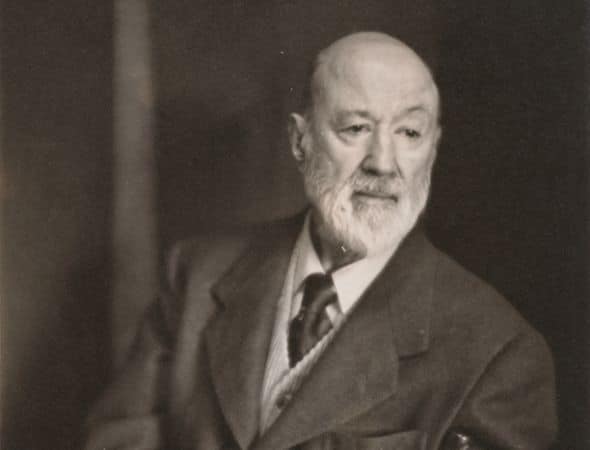IVES: Three Places in New England
by Jeff Counts
THE COMPOSER – CHARLES IVES (1874-1954) – Ives & Co. was formed in 1907. It would go on to become the largest insurance agency in the country but, to get there, it would require a great deal of time and effort from its founder, Charles Ives. That he was able to compose at all during those years is hard to fathom, but between 1908 and 1917 he kept up an inhuman pace and produced many of the works that now define his legacy. These included the Holidays Symphony, the 4th Symphony, the Concord Sonata, the 2nd String Quartet and Three Places in New England. 1908, the beginning of this great creative sprint, was also marked by a heart attack and a marriage for Ives.

THE HISTORY – One wonders if the heart attack would have done him in if not for the marriage. He would have more heart attacks, but there was only one Harmony Twichell, a true soul mate if ever there was one. In fact, it was a walk with Harmony along the Housatonic River in Stockbridge just after they wed that inspired Three Places in New England. But inspiration rarely led to quick completion for Ives. So much of his music suffered from long periods of incubation and revision before seeing the stage. As a result, many dates adorn the history of Three Places in New England, making it difficult to pin the piece solely to that single sweet moment with Harmony. It was written (or drawn from previous material) between 1908 and 1914, revised and reduced in 1929, performed privately in 1930, premiered to the public in 1931 and restored to its original form around 1980. Each of the three movements evokes images of Ives’ native region through his signature blending of musical quotes and gorgeously atmospheric coloration. Fragments of popular hymns, ballads, marches and patriotic songs appear throughout the score to create an intricate polytonal/polyrhythmic palette that places the listener in each of the three specific “places” with an uncanny exactness. Ives expertly captures the conflating sounds, emotions and memories of the American experience in general and especially our inclination towards shared historical reflection. Saint-Gaudens is a bas-relief in Boston which commemorates the 54th Massachusetts Volunteer Infantry – the first black unit that fought in the Civil War. Putnam’s Camp was a Revolutionary War memorial park in Redding, Connecticut named for General Israel Putnam and the site of July 4th celebrations during Ives’ childhood. The Housatonic at Stockbridge is based partly on a Robert Underwood Johnson poem which suggests a “Contented river!” but it was really that 1908 stroll with his new wife that did it. “We walked in the meadow along the river,” he wrote, “and heard distant singing from the church…” We hear it too.
THE WORLD – Elsewhere in 1931, the electron microscope was invented in Germany, viewers got the first look at the iconic drooping clocks in Salvador Dalí’s painting The Persistence of Memory, the Spanish Monarchy ended and the George Washington Bridge opened in New York.
THE CONNECTION – The most recent Utah Symphony Masterworks series performances of Three Places in New England were in May 2011 with Thierry Fischer on the podium.












